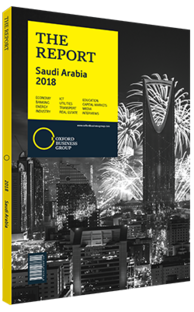A range of initiatives and investment could see nuclear power generation take root
Looking forward to 2032, the King Abdullah City for Atomic and Renewable Energy (KACARE) estimates that 13-14% of Saudi Arabia’s power will be generated by nuclear reactors, and an eventual goal has been set of supplying 17.6 GW of power to the national grid. In addition, the Kingdom hopes that this investment will not only help meet growing electricity demand, but also provide a platform for research and development (R&D) growth. The atomic energy industry provides high-value jobs, and has applications in medicine, agriculture, minerals and, potentially, water desalination.
Early Efforts
The current nuclear programme dates to 2006, when the GCC announced it was commissioning a study of the peaceful uses of nuclear power. The following year, the organisation agreed with the International Atomic Energy Agency (IAEA) to engage in further study, with Saudi Arabia the leading GCC country. In 2009 the government announced it was setting up its own programme, with a royal decree in 2010 declaring that the development of atomic energy was essential to meet the country’s growing demand for power and water, and to reduce hydrocarbons dependency. KACARE was then established as the country’s chief nuclear development agency.
Cooperation
The next important steps came in 2011, when the Kingdom made nuclear cooperation deals with France, Argentina and South Korea. In 2012 another agreement was inked with the China National Nuclear Corporation (CNNC), with additional pacts signed in 2014 and 2015. In 2017 CNNC also settled on terms with the Saudi Geological Survey to explore nine potential sites for uranium exploration across the Kingdom. Two years earlier a cooperation deal was struck with Russia’s Rosatom, and was expanded in October 2017 to include small and medium-sized reactors, and a research reactor. In addition, in 2016 the Kingdom signed an agreement related to fuel supply with Kazakhstan. Saudi Arabia now has detailed cooperation agreements with nearly all of the world’s major nuclear power plant installers and manufacturers. KACARE has also announced it is seeking similar agreements with the UK, US and the Czech Republic.
Oversight & Bidding
To oversee the nascent sector, the Saudi Arabian Atomic Regulation Authority was established in early 2014, with an IAEA safeguards agreement in force since 2009. With this legal, international and regulatory infrastructure in place, Saudi Arabia then moved on in 2017 towards the announcement of the very first tenders. These involve two plants that could generate up to 2.8 GW in total, according to international press reports.
A request for information for two nuclear power plants was sent out to suppliers in October 2017, and competition is expected to be fierce. With the equivalent of 17 standard-sized reactors likely up for bidding through to 2032, as in the past, companies with deep ties to the Kingdom, such as Electricité de France and South Korea’s KEPCO, are likely to be in the running.
At the same time, a range of smaller nuclear projects is under consideration, particularly for desalination plants and R&D purposes. China Nuclear Engineering Group has, for example, a memorandum of understanding with the Saudi Technology Development and Investment Company (Taqnia) to develop water desalination projects using gas-cooled reactors. Taqnia has also set up Invania, a joint venture with Argentina’s state-owned INVAP, to look at small, 100-MW thermal/27-MW electric reactors for the same purpose.
Meanwhile, KACARE’s agreements with South Korea are bearing fruit. A major project being undertaken by the Saudi institution is a system-integrated modular advanced reactor technology programme, in association with the Korea Atomic Energy Research Institute. Initial engineering designs have now been reviewed, with the likelihood that this system – considered safer by the South Koreans – may form the future basis of many power generation and desalination plants in the years ahead, both inside the Kingdom and elsewhere.
You have reached the limit of premium articles you can view for free.
Choose from the options below to purchase print or digital editions of our Reports. You can also purchase a website subscription giving you unlimited access to all of our Reports online for 12 months.
If you have already purchased this Report or have a website subscription, please login to continue.

